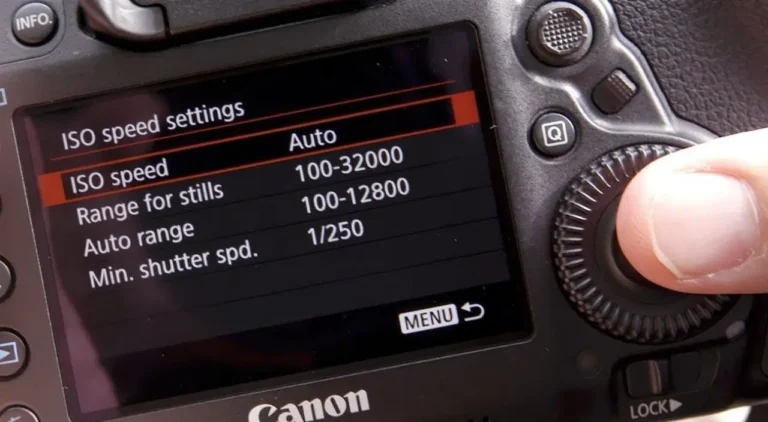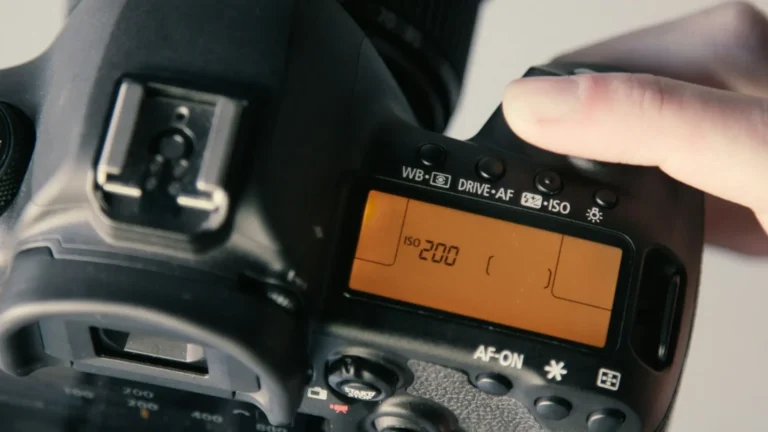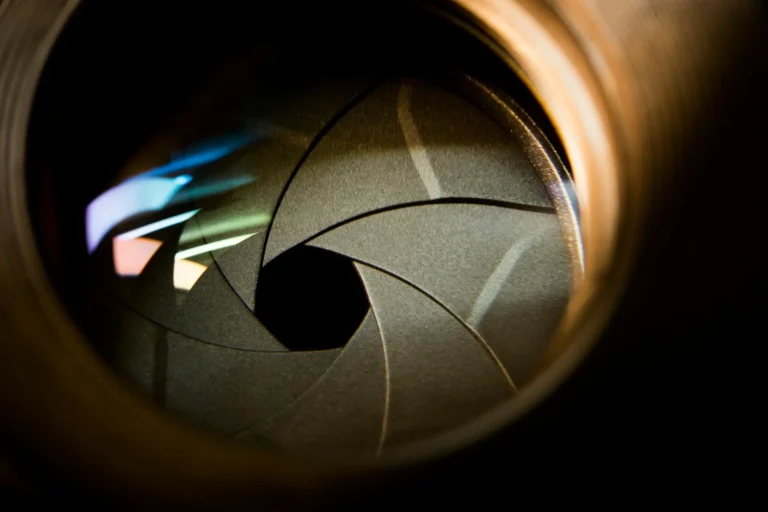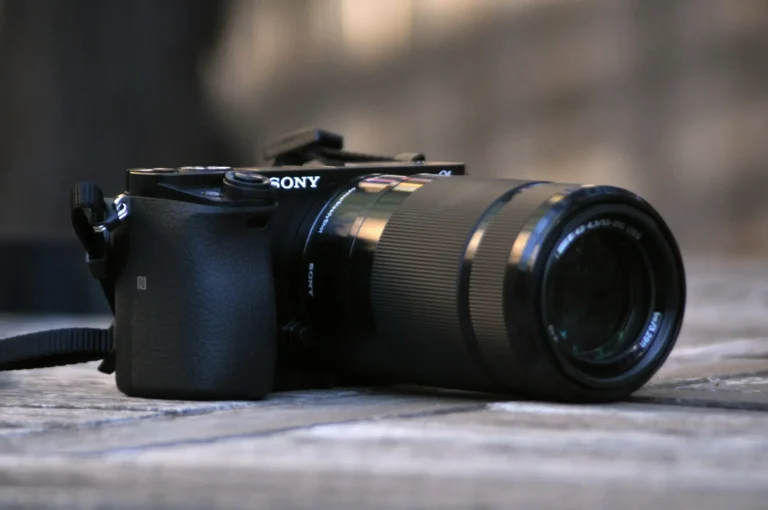Ever felt captivated by stunning photographs and wondered how to capture such beauty yourself? Understanding the basics is crucial whether you’re a beginner or have dabbled in photography.
In this post, we’ll unravel the fundamental principles of photography, from mastering your camera settings to grasping composition techniques. We’ll discuss essential concepts like aperture, shutter speed, and ISO, demystifying their impact on your images. Moreover, we’ll explore tips for framing compelling shots and utilizing natural light effectively.
By the end of this guide, beginner photographers will be equipped with practical knowledge to kick-start their photographic journey with confidence.
Key Takeaways
- Understanding the basics of photography is crucial for beginners to build a strong foundation in this art form.
- Mastering camera basics, such as understanding aperture, shutter speed, and ISO, is essential for capturing high-quality images.
- Exploring exposure in photography helps in achieving the desired balance of light and darkness in photos.
- Navigating different camera modes and settings allows photographers to adapt to various shooting conditions and subjects.
- Harnessing the power of composition enhances the visual impact of photographs, making them more appealing to viewers.
- Digging into photography gear essentials assists beginner photographers in selecting the right equipment to suit their needs and budget.
Understanding Photography Basics
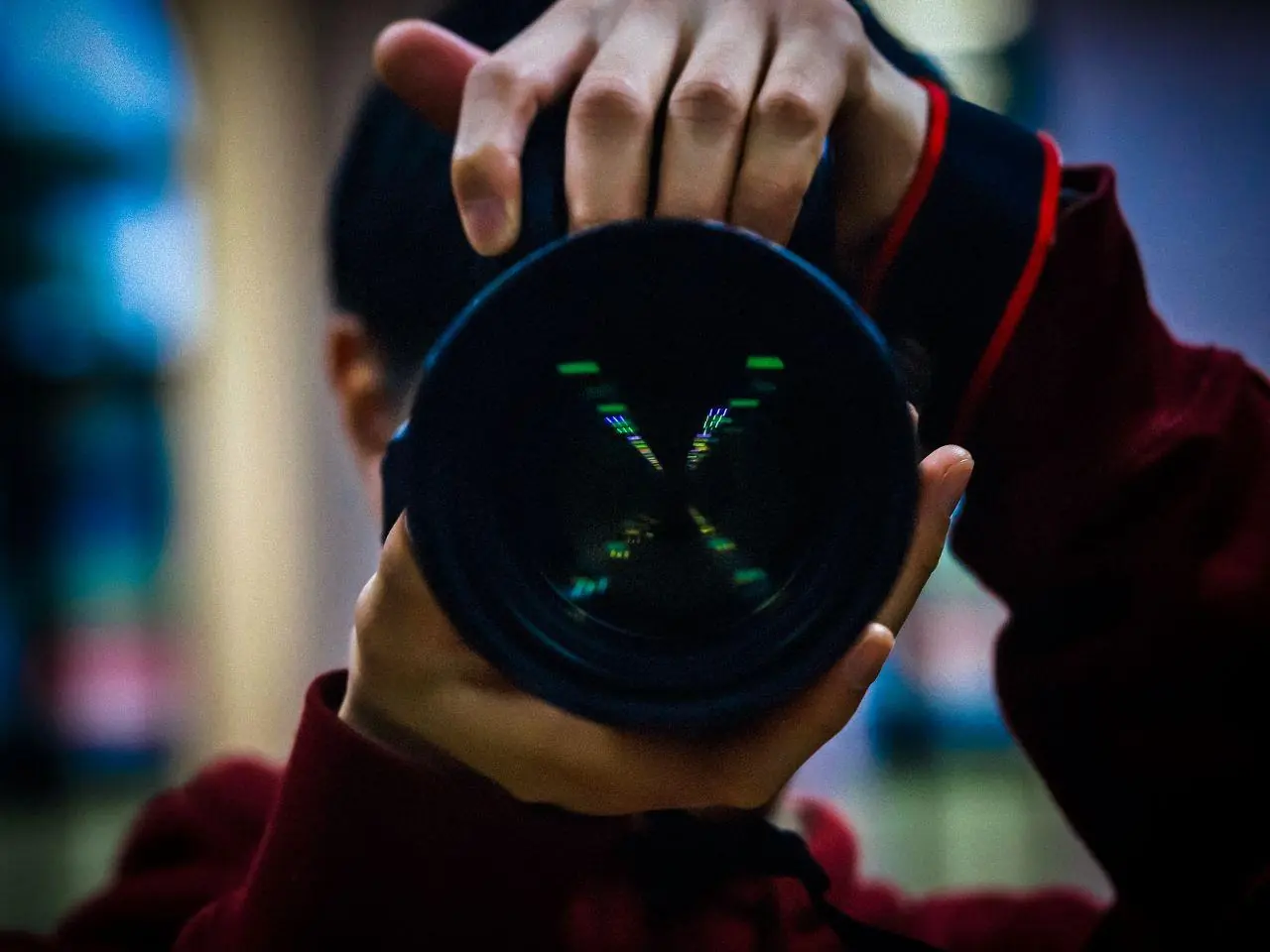
Camera Workings
Understanding photography basics begins with comprehending the internal mechanisms of a camera. Cameras work by capturing light and processing it to produce images. The lens focuses light onto the image sensor, where it is converted into an electronic signal.
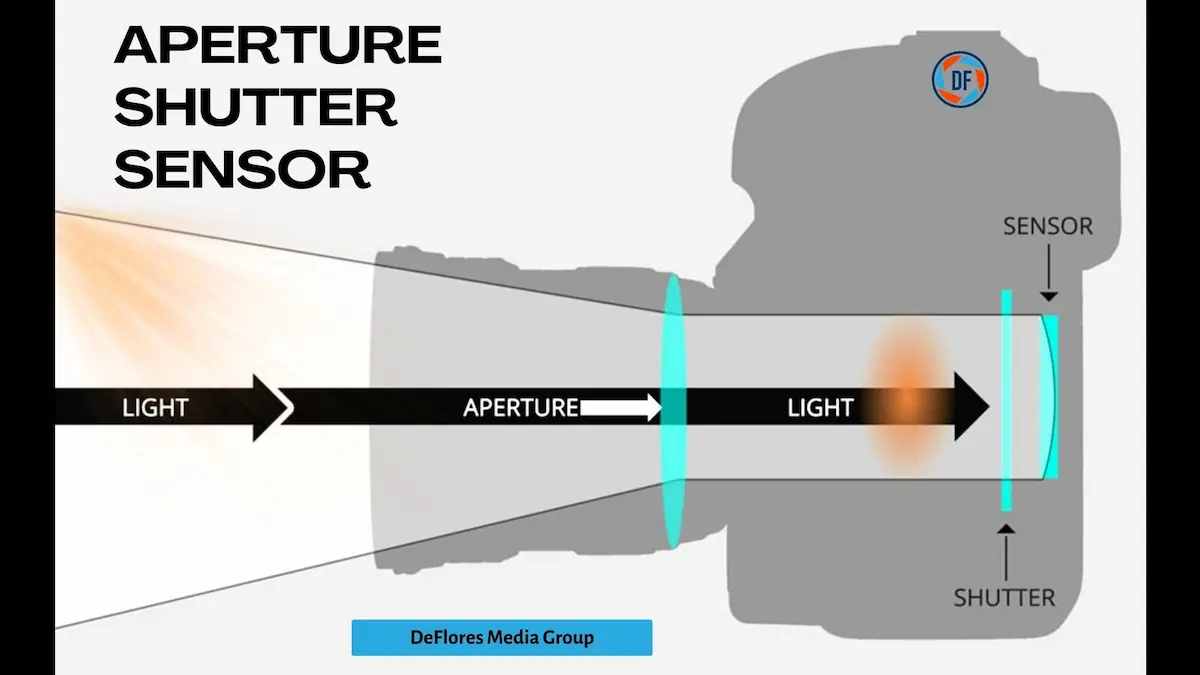
Different camera parts serve specific functions that contribute to creating a photograph. For example, the aperture controls the amount of light entering the camera. At the same time, the shutter speed determines how long light enters the sensor. These settings play a crucial role in achieving desired exposure and artistic effects.
Light is at the core of photography. It’s captured by the camera’s lens and then processed through various settings to create an image. Learning how different lighting conditions affect photographs is essential for mastering photography fundamentals.
Types of Photography
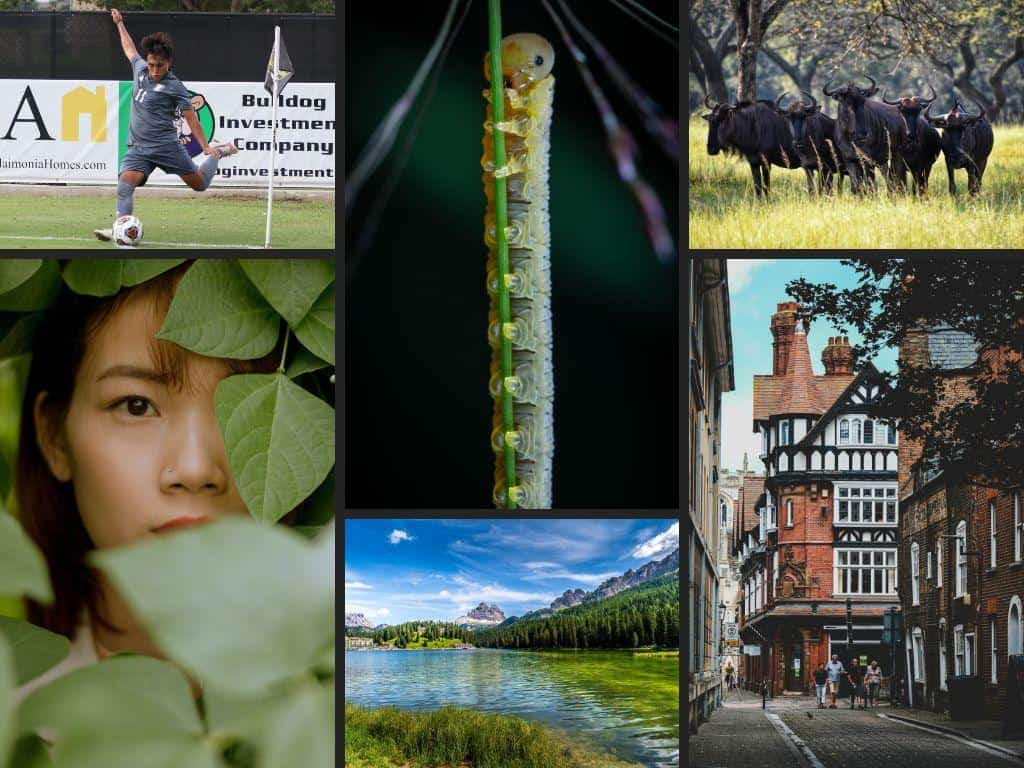
Familiarizing oneself with various genres is vital when researching basic photography concepts. Portrait photography involves capturing individuals or groups, focusing on their expressions and emotions. Landscape photography entails depicting scenic views, emphasizing nature’s beauty and vastness.
Macro photography captures close-up shots of small subjects like insects or flowers, revealing intricate details often unnoticed by the naked eye. Wildlife photographers aim to document animals in their natural habitats, requiring patience and precision to capture compelling moments.
Sports photographers freeze action-packed scenes during sporting events using specialized techniques and equipment such as fast shutter speeds and telephoto lenses. Street photographers candidly capture everyday life in public spaces, showcasing raw human interactions against urban backdrops.
Understanding these diverse genres provides aspiring photographers with insights into which types resonate most with them before diving deeper into learning about each genre’s unique characteristics.
Photography Gear
For those embarking on their journey to grasp photography basics, having essential gear is paramount for honing skills effectively. A reliable digital single-lens reflex (DSLR) or mirrorless camera is a foundational tool for beginners due to its versatility and user-friendly features.
Quality lenses are indispensable components that significantly impact image quality; they enable photographers to achieve sharper focus, better clarity, and creative effects like bokeh (aesthetic blur). Accessories such as tripods stabilize cameras for long exposures or portrait sessions. At the same time, filters enhance colors or reduce glare in varying lighting conditions.
Mastering Camera Basics for Beginners
Mastering camera handling is crucial for capturing great shots. Holding a camera steady is essential for reducing camera shake and achieving sharp images. To accomplish this, ensure that your elbows are tucked close to your body and hold the camera with both hands.
Maintaining a stable grip while shooting can significantly impact the quality of your photos. Using both hands to hold the camera gives you better control over its movement, resulting in clearer and more focused images. Consider using a tripod or monopod when shooting in low light conditions or when capturing long exposure shots.
Exploring Exposure in Photography
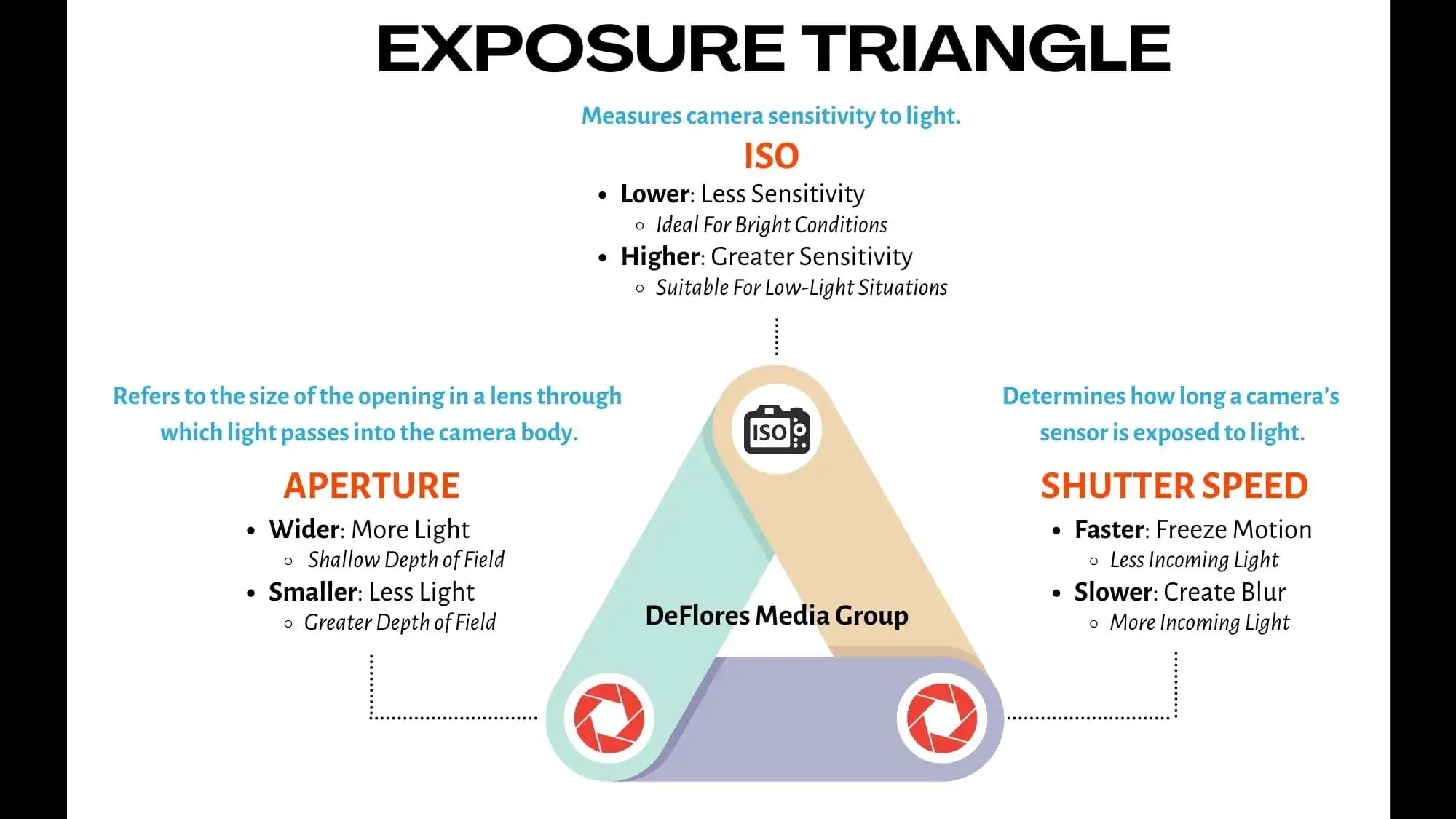
Exposure Triangle
Ever felt captivated by stunning photographs and wondered how to capture such beauty yourself? Understanding the basics is crucial whether you’re a beginner or have dabbled in photography.
In this post, we’ll unravel the fundamental principles of photography, from mastering your camera settings to grasping composition techniques. We’ll discuss essential concepts like aperture, shutter speed, and ISO, demystifying their impact on your images. Moreover, we’ll explore tips for framing compelling shots and utilizing natural light effectively.
By the end of this guide, beginner photographers will be equipped with practical knowledge to kick-start their photographic journey with confidence.
Key Takeaways
- Understanding the basics of photography is crucial for beginners to build a strong foundation in this art form.
- Mastering camera basics, such as understanding aperture, shutter speed, and ISO, is essential for capturing high-quality images.
- Exploring exposure in photography helps in achieving the desired balance of light and darkness in photos.
- Navigating different camera modes and settings allows photographers to adapt to various shooting conditions and subjects.
- Harnessing the power of composition enhances the visual impact of photographs, making them more appealing to viewers.
- Digging into photography gear essentials assists beginner photographers in selecting the right equipment to suit their needs and budget.
Understanding Photography Basics
Camera Workings
Understanding photography basics begins with comprehending the internal mechanisms of a camera. Cameras work by capturing light and processing it to produce images. The lens focuses light onto the image sensor, where it is converted into an electronic signal.
Different camera parts serve specific functions that contribute to creating a photograph. For example, the aperture controls the amount of light entering the camera. At the same time, the shutter speed determines how long light enters the sensor. These settings play a crucial role in achieving desired exposure and artistic effects.
Light is at the core of photography. It’s captured by the camera’s lens and then processed through various settings to create an image. Learning how different lighting conditions affect photographs is essential for mastering photography fundamentals.
Types of Photography
Familiarizing oneself with various genres is vital when researching basic photography concepts. Portrait photography involves capturing individuals or groups, focusing on their expressions and emotions. Landscape photography entails depicting scenic views, emphasizing nature’s beauty and vastness.
Macro photography captures close-up shots of small subjects like insects or flowers, revealing intricate details often unnoticed by the naked eye. Wildlife photographers aim to document animals in their natural habitats, requiring patience and precision to capture compelling moments.
Sports photographers freeze action-packed scenes during sporting events using specialized techniques and equipment such as fast shutter speeds and telephoto lenses. Street photographers candidly capture everyday life in public spaces, showcasing raw human interactions against urban backdrops.
Understanding these diverse genres provides aspiring photographers with insights into which types resonate most with them before diving deeper into learning about each genre’s unique characteristics.
Photography Gear
For those embarking on their journey to grasp photography basics, having essential gear is paramount for honing skills effectively. A reliable digital single-lens reflex (DSLR) or mirrorless camera is a foundational tool for beginners due to its versatility and user-friendly features.
Quality lenses are indispensable components that significantly impact image quality; they enable photographers to achieve sharper focus, better clarity, and creative effects like bokeh (aesthetic blur). Accessories such as tripods stabilize cameras for long exposures or portrait sessions. At the same time, filters enhance colors or reduce glare in varying lighting conditions.
Mastering Camera Basics for Beginners
Mastering camera handling is crucial for capturing great shots. Holding a camera steady is essential for reducing camera shake and achieving sharp images. To accomplish this, ensure that your elbows are tucked close to your body and hold the camera with both hands.
Maintaining a stable grip while shooting can significantly impact the quality of your photos. Using both hands to hold the camera gives you better control over its movement, resulting in clearer and more focused images. Consider using a tripod or monopod when shooting in low light conditions or when capturing long exposure shots.
Exploring Exposure in Photography
Exposure Triangle
Photography exposure involves the exposure triangle, which consists of three elements: aperture, shutter speed, and ISO sensitivity. Let’s start with aperture. Aperture refers to the opening in the lens through which light passes into the camera. A smaller aperture (represented by a higher f-stop number) results in a more significant depth of field, keeping more of the image sharp from front to back. Conversely, a larger aperture (lower f-stop number) creates a shallower depth of field, ideal for portraits where you want the subject to stand out against a blurred background.
It’s essential to understand its impact on capturing motion. A faster shutter speed freezes action, while a slower one allows for motion blur. For instance, when photographing sports or fast-moving subjects, using a quicker shutter speed ensures that you capture crisp images without any blurring caused by movement.
In addition to aperture and shutter speed, we have ISO sensitivity as part of the exposure triangle. The ISO setting determines your camera sensor’s sensitivity to light; higher ISO settings brighten an image but may introduce digital noise or graininess. Increasing the ISO can help maintain proper exposure without relying solely on longer shutter speeds or wider apertures when shooting in low-light conditions like indoors or at night.
Metering and Histograms
Understanding different metering modes is crucial for achieving proper exposure measurement in photography. Most cameras offer options such as evaluative metering (which considers lighting across the entire frame), spot metering (focusing on specific areas), and center-weighted metering (emphasizing the center). You can ensure accurate exposures by choosing an appropriate metering mode based on your subject and lighting conditions.
Interpreting histograms plays a vital role in evaluating image exposure after capturing photos. A histogram is a graph representing how pixels are distributed across different tonal ranges within an image—shadows, mid-tones, and highlights. By analyzing histograms displayed on your camera’s LCD screen or during post-processing software use afterward, you can identify whether an image is underexposed (too dark), overexposed (too bright), or well-balanced regarding its tonal distribution.
Essential Elements of Photography


Composition Techniques
Consider the rule of thirds to create a well-balanced composition when capturing a photo. This means dividing the image into nine equal parts using horizontal and vertical lines. Place the subject at the intersecting points to draw attention. Use leading lines like roads or fences to guide viewers’ eyes toward the main subject.
Framing techniques involve using elements within the scene to create a frame around the subject. For instance, you can capture a photo through an archway or between tree branches for added depth and context in your images. Moreover, incorporating symmetry, patterns, and perspective adds visual interest and balance to your compositions.
To achieve visually appealing compositions, focus on creating dynamic angles that offer unique perspectives of your subjects. Experiment with different viewpoints, such as shooting from high above or down low, to add variety and intrigue to your photographs.
Image Sharpness
To ensure sharp focus in photographs, utilize techniques like adjusting your camera’s autofocus settings for precision, focusing on specific areas within an image. Understanding depth of field is crucial; it refers to how much of your image is in focus from front to back. By controlling this aspect effectively, you can direct viewers’ attention precisely where you want it.
In different shooting scenarios, such as landscape photography, where achieving maximum sharpness throughout the scene is essential, utilizing smaller apertures (higher f-stop numbers) helps maintain focus across distant foregrounds and backgrounds simultaneously.
Fast shutter speeds are vital for freezing motion and capturing precise details without blur when photographing moving subjects such as sports events or wildlife action shots.
White Balance

Understanding white balance is fundamental as it directly impacts color temperature in photos based on lighting conditions—whether natural light outdoors or artificial light indoors.
Custom white balance settings allow photographers to adjust color tones accurately according to their environment by calibrating their cameras based on specific lighting situations. Photographers can achieve accurate color reproduction without unwanted color casts influencing their images by making precise adjustments through white balance settings according to ambient light sources like incandescent bulbs or fluorescent lights.
Navigating Through Camera Modes and Settings
Shooting Modes
Understanding photography basics involves mastering different shooting modes. Single shot mode is ideal for still subjects, while continuous mode captures moving subjects. The self-timer mode is useful for self-portraits or group photos with a delay.
The bracketing mode takes multiple shots at different exposures, which is beneficial for challenging lighting conditions. Burst mode quickly captures several images, perfect for action photography.
Knowing when to use specific shooting modes enhances the quality of your photographs. For example, continuous mode can help capture the perfect moment in sports photography. At the same time, bracketing is essential in high-contrast scenes like sunsets.
Choosing Lenses
Understanding their types and applications is crucial. Prime lenses have fixed focal lengths and offer excellent image quality. Zoom lenses provide versatility by offering a range of focal lengths in one lens.
Wide-angle lenses are great for capturing expansive landscapes or tight indoor spaces. In contrast, telephoto lenses bring distant subjects closer with their extended reach.
Selecting the correct lens depends on the photography genre you’re interested in pursuing. For instance, portrait photographers often opt for prime lenses due to their sharpness and wide apertures that create beautiful background blur (bokeh).
Sensor Size
Comparing sensor sizes such as full-frame, APS-C, and micro four-thirds reveals varying implications on image quality and depth of field. Full-frame sensors excel in low-light performance and produce a shallower depth of field compared to smaller sensors.
APS-C sensors balance size and performance to suit many photographers’ needs. Micro four-thirds sensors are compact but sacrifice some low-light capabilities compared to larger formats.
Understanding these differences helps photographers make informed decisions based on their specific requirements.
Harnessing the Power of Composition in Photography
Composition Basics

Photography basics involve understanding composition principles. These principles include the rule of thirds, leading lines, framing, and viewpoint. The rule of thirds divides an image into nine equal parts using two horizontal and two vertical lines. Critical elements along these lines or at their intersections create a balanced composition. It’s crucial to distribute the visual weight evenly across the frame. This ensures that no single element overpowers the others.
Exploring different framing techniques allows photographers to control what appears within their images’ borders. By adjusting framing, they can emphasize certain subjects while eliminating distractions from the background. Understanding various viewpoints helps capture unique perspectives and angles, making photographs more engaging and visually appealing.
When framing shots, applying fundamental composition techniques involves considering elements like symmetry, patterns, texture, color contrast, and depth.
Enhancing Composition
Effectively utilizing leading lines guides viewers’ attention toward an image’s specific subject or focal point. Lines such as roads, fences, rivers, or buildings can strategically lead the viewer’s eye through a photograph.
Incorporating foreground interest adds depth and dimension to compositions by providing a sense of scale and context for the main subject. For instance, including objects like rocks or flowers in front of vast landscapes creates a compelling visual narrative.
Using negative space, which refers to open areas around the main subject in an image, can create powerful compositions with impactful visuals by drawing attention directly to the subject without any distractions.
Exploring the Essentials of Photography Gear
Choosing Cameras
There are several factors to consider. Firstly, think about the camera body – its size, weight, and handling. This impacts how comfortable you’ll be when shooting. For instance, a smaller mirrorless camera might be more portable than a bulky DSLR.
Comparing different types of cameras is crucial, too. DSLR (digital single-lens reflex) cameras are known for their versatility and excellent image quality. On the other hand, mirrorless cameras are lighter and more compact while still delivering high-quality images. Then there are compact cameras, which are small and easy to carry around.
Understanding how your camera choice impacts your photography style is also essential. For example, if you’re interested in landscape photography or astrophotography, a DSLR with interchangeable lenses might be ideal for capturing expansive scenic views or distant stars.
Selecting Equipment
Now, let’s discuss selecting equipment to enhance your photography experience. Essential accessories like extra batteries, memory cards, and lens cleaning kits can make a significant difference when shooting all day.
Think about the type of photography you enjoy most – do you prefer capturing landscapes or snapping portraits? A sturdy tripod with adjustable legs may suit landscape photographers who often shoot on uneven terrain. In contrast, portrait photographers may opt for a lightweight tripod that’s easier to maneuver in confined spaces.
Choosing compatible gear for specific camera models is essential for maximizing performance. If you own a particular camera brand such as Canon or Nikon, ensure that any additional lenses or flashes you purchase are designed to work seamlessly with your specific model.
Unraveling the Art of Editing in Photography
Editing Basics
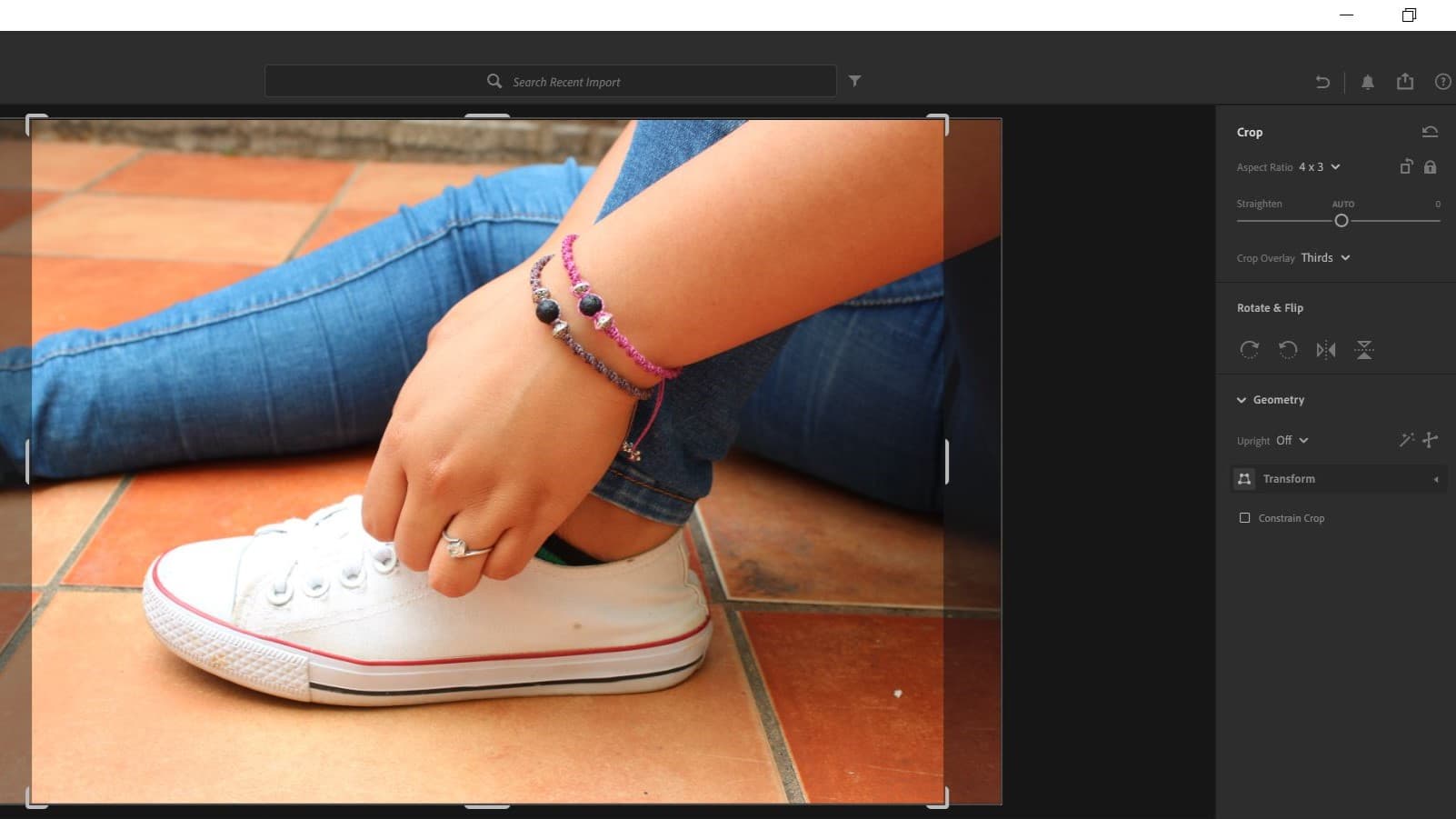

Editing plays a crucial role in refining and enhancing images. Post-processing software options like Adobe Lightroom and Photoshop are popular among photographers for their diverse editing tools. These tools include cropping, exposure adjustment, and color correction, which allow photographers to fine-tune their images.
Understanding file formats is essential when saving edited images. Formats like JPEG are suitable for sharing online due to their smaller file size. In contrast, RAW files retain more image data and offer greater flexibility during the editing process. Beginners need to grasp these fundamental concepts as they embark on their journey into photo editing.
Editing Techniques
Utilizing layers and masks in post-processing software enables non-destructive editing, allowing photographers to make changes without altering the original image data. This technique provides flexibility and control over specific adjustments within an image.
Advanced retouching techniques such as frequency separation can help address skin imperfections or other intricate details while preserving natural textures. By mastering these techniques, photographers can achieve professional-looking results with their portraits or close-up shots.
Preserving image quality during editing is paramount. Over-editing can lead to loss of detail or introduce artifacts into the image. Therefore, understanding how different adjustments impact an image’s quality is crucial for maintaining high standards throughout editing.
Essential Tips for Beginner Photographers
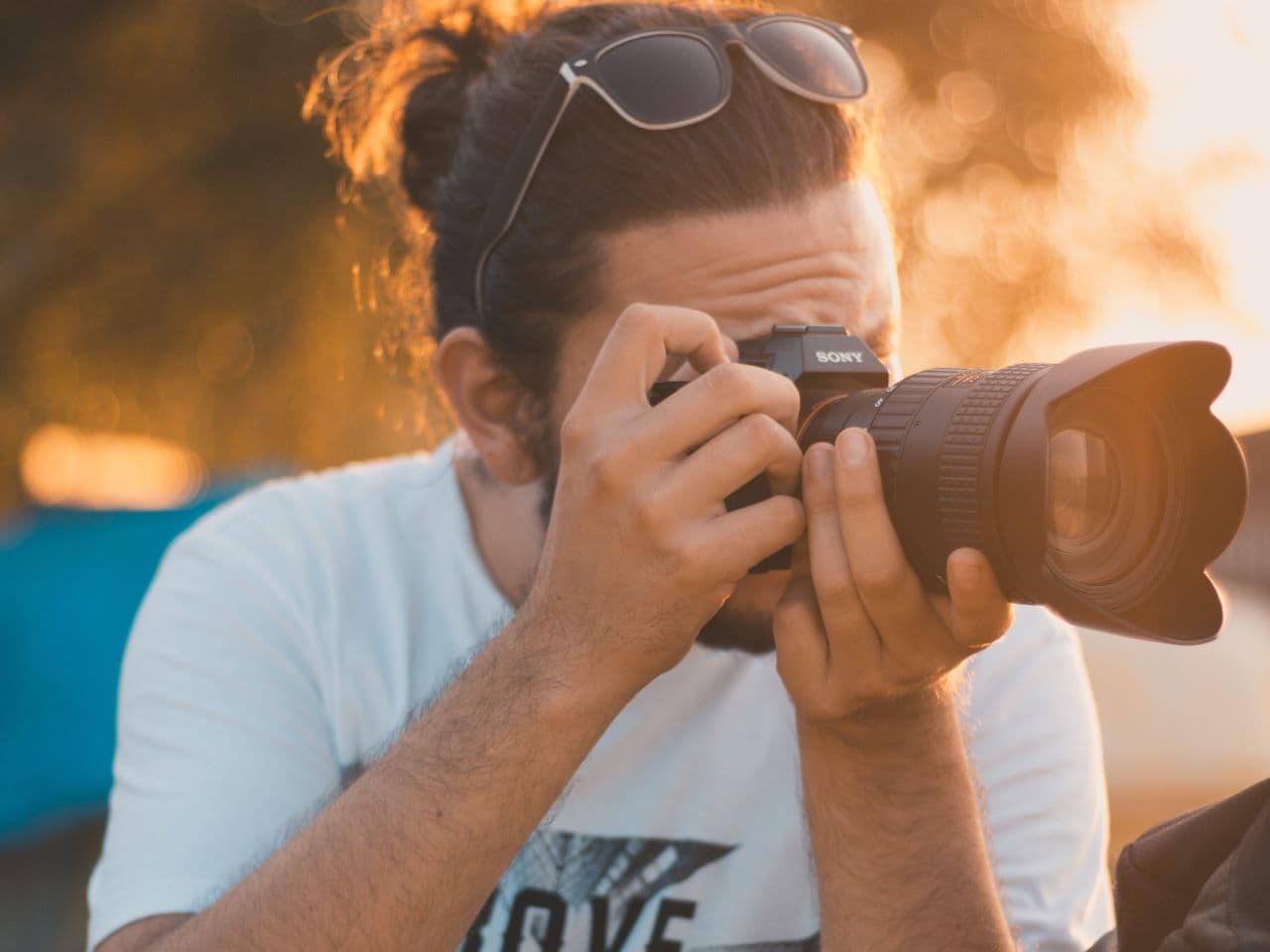
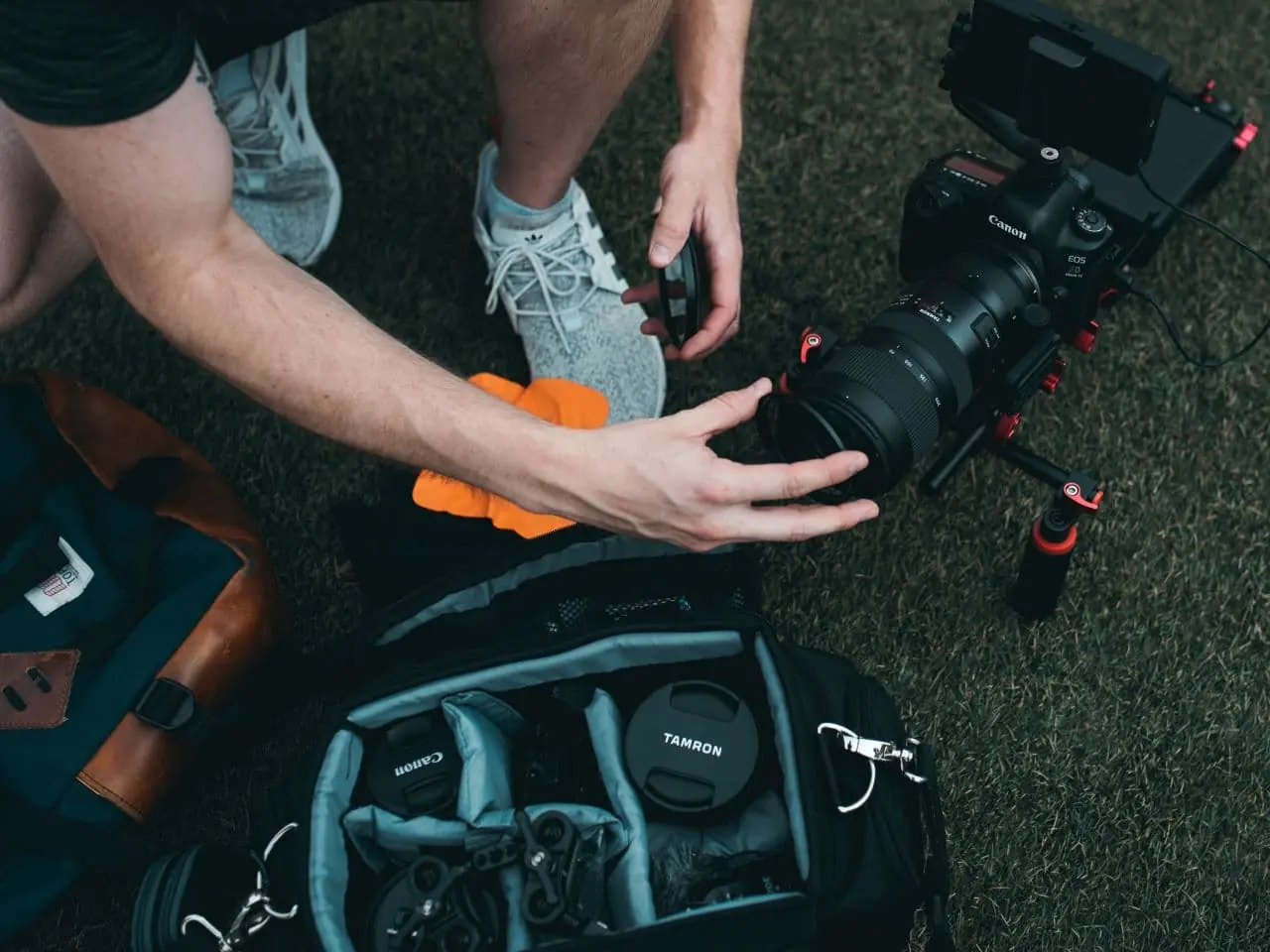
Maximizing Shooting Modes
Understanding shooting modes is crucial. For beginner photographers, manual mode allows complete control over settings like aperture, shutter speed, and ISO. This empowers you to unleash your creativity and capture the perfect shot in any lighting condition.
Semi-automatic modes benefit beginners by providing partial control over specific settings while the camera manages others. For instance, aperture priority mode lets you set the desired aperture while the camera adjusts the shutter speed accordingly.
Scene modes are handy in certain shooting situations, such as portraits, landscapes, or night photography. These pre-programmed modes optimize settings for specific scenarios, making them ideal for beginners looking to achieve great results without extensive technical knowledge.
Proper Camera Handling
Regularly cleaning camera equipment is essential for maintaining optimal performance. Dust and dirt can affect image quality and even damage delicate components of your gear.
Storing cameras properly when not in use is equally important. Keeping them in a dry place with a controlled temperature helps prevent moisture buildup and potential mold growth.
When heading out for outdoor shoots, ensuring the safe handling of your gear is vital. Protecting cameras from extreme weather conditions or accidental bumps can extend their lifespan and keep them functioning at their best.
Closing Thoughts
Congratulations on making it through this comprehensive guide to photography basics! You’ve gained insight into mastering camera settings, understanding exposure, honing your composition skills, and essential tips for beginner photographers. Now armed with this knowledge, it’s time to grab your camera and start capturing stunning images.
So, go ahead and put these photography fundamentals into practice. Experiment with different techniques, embrace the learning process, and don’t be afraid to make mistakes. Remember, great photography is a journey, not a race. Keep refining your skills, seeking inspiration, and exploring new perspectives. The world is your canvas – now go out there and paint it with your unique photographic vision!
Frequently Asked Questions
What are the essential elements of photography?
The essential elements of photography include composition, lighting, exposure, and focus. These elements are crucial in creating visually appealing and impactful images.
How can I navigate through camera modes and settings effectively?
Understanding your camera’s modes and settings is vital to capturing great photos. Start by familiarizing yourself with the basic modes like aperture priority, shutter priority, and manual mode. Experimenting with different settings will help you grasp their impact on your photographs.
What is the significance of mastering photography basics for beginners?
Mastering camera basics lays a strong foundation for honing your photography skills. Learning about aspects such as ISO, aperture, shutter speed, and white balance gives you more control over how your photos turn out.
How important is composition in photography?
Composition plays a pivotal role in creating compelling images. It involves arranging visual elements within the frame to produce aesthetically pleasing results that draw viewers into the photograph.
What gear essentials should beginner photographers prioritize?
Beginner photographers should prioritize investing in a good quality camera body, versatile lenses (e.g., prime lens or zoom lens), a sturdy tripod for stability, memory cards with ample storage capacity, and essential accessories like lens filters and a camera bag.

